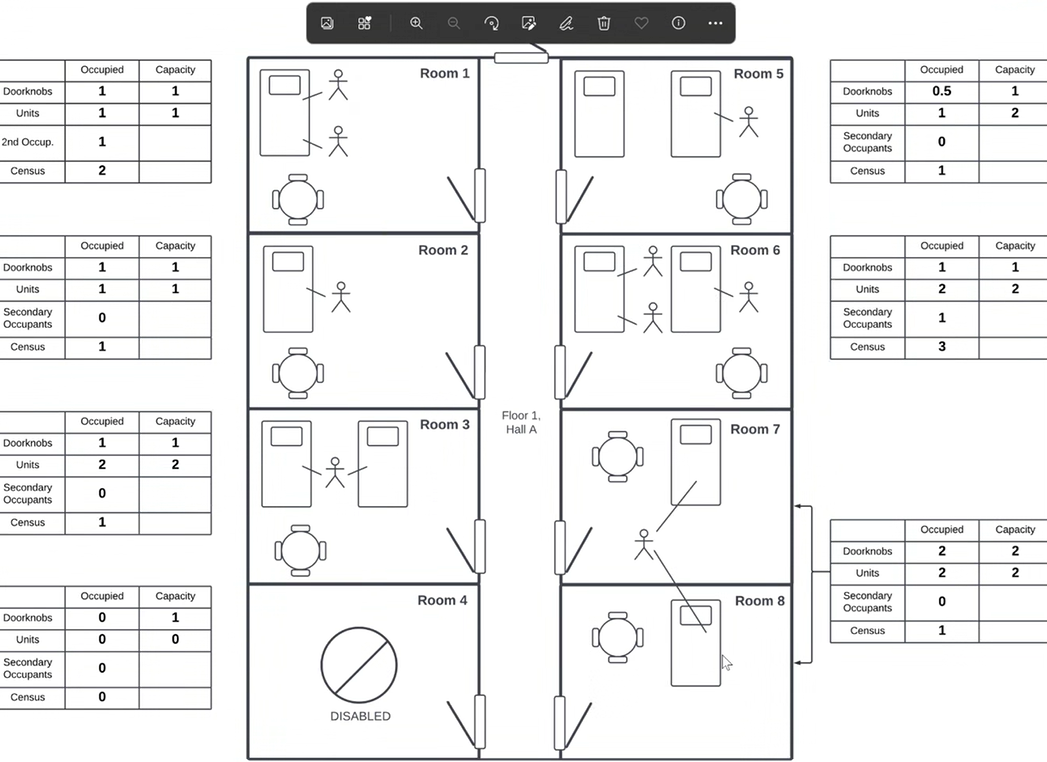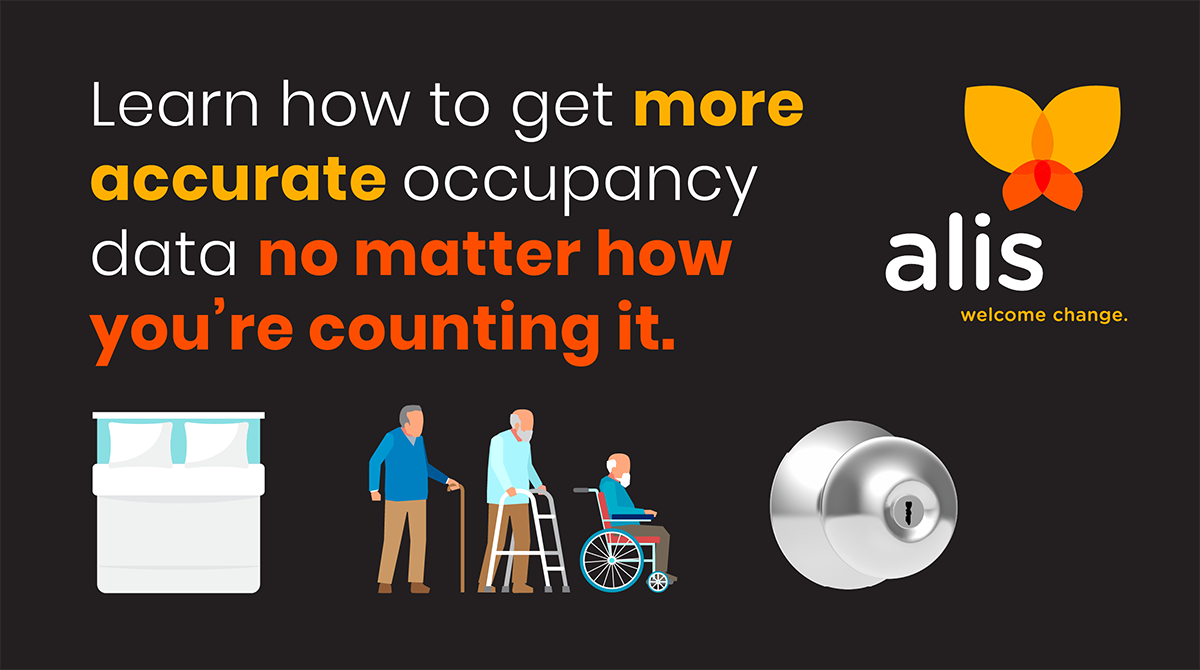Stop Counting Residents and Start Leveraging Clinical Data
Why is occupancy tracking in assisted living communities so difficult? Start with the nature of assisted living, ongoing move ins and move outs across a portfolio of thousands of rooms, of various configurations, in multiple buildings. Combine it with conflicting objectives from multiple stakeholders (i.e., sales team vs. investors) and inconsistent measurement approaches. Add secondary residents and manual, high-cost data collection. It’s a recipe for confusion, mistrust, and inaccuracy.
In Assisted Living Communities, Understanding Occupancy is Essential
The issues of occupancy tracking and reporting in assisted living communities are big, but they are made even bigger by the fact that occupancy is an incredibly important KPI—measuring the overall health of a portfolio. Data that is not up-to-date or accurate can drive poor decisions and underperformance. Especially at a time when the overall industry is recovering from a multi-year pandemic and staffing shortages, getting occupancy tracking and reporting right is too important to ignore.
Unfortunately, the traditional methods of measuring occupancy are broken, and incremental improvements are not yielding results. More and more, forward-thinking communities have begun to embrace a fresh, innovative approach, leveraging clinical data as the source for more accurate occupancy tracking and reporting. This new approach solves the four main challenges that exist with the traditional methods.
Challenge #1: Terminology
Doorknobs. Beds. Heads. Not only are the definitions of these terms not standardized, but different departments within the same organization may use different definitions for each of them. Worse yet, these common counting methods can dramatically overestimate or underestimate actual occupancy. For example, take these eight rooms below. Based on the occupancy tracking technique used, the reported occupancy numbers will vary widely. How can an organization run a business when such a critical KPI can be reported with so many different results?

Challenge #2: Timeliness
The scenario above is one day’s picture for eight rooms. Tomorrow, the picture will likely change. Multiply that by hundreds of rooms multiplied again by dozens of buildings and you can see the challenge for an assisted living community trying to accurately track occupancy. It requires constant counting. Often performed by a dedicated full-time resource, this can add incredible cost. Many communities instead do spot checks, and while this requires fewer resources, it leaves large gaps in information. Running an assisted living community using estimated and averaged occupancy numbers is like driving a car and only being able to look out at the road every few minutes.
Challenge #3: Trustworthiness
Even solving for the first two challenges, occupancy reporting must be able to identify the exact numbers of primary residents and secondary residents, by room, and by day. Investors depend on these numbers as a measure financial viability, but often occupancy reports don’t have precise or reliable data on the mix of primary and secondary residents. Counting secondary residents as primary can have a major negative effect on financial decision making. And because incentives aren’t aways aligned throughout the organization, reports may need to be audited or checked. This adds additional costs and slows the results. By the time a report is audited, the real-time occupancy numbers are likely quite different.
Challenge #4: Flexibility
Because occupancy is such an important KPI, executives need to be able to view occupancy reports by day, month, quarter, or year as well as perform trending and comparative analysis. They should be able to analyze primary vs. secondary residents, resident turnover, occupancy per bed, and other critical metrics. Current occupancy reporting techniques usually lack this capability. Getting to this goal not only involves a significant amount of data collection, but also multiple ways of viewing the information which requires a flexible and sophisticated tool to make it even possible.
A New Approach to Occupancy Tracking and Reporting
The answer to these challenges lies in leveraging the clinical data that is already being collected by ALIS from Medtelligent. As a fully integrated platform purpose-built for assisted living communities, with exceptionally high adoption and usage rates, ALIS already has data on every resident across every room and for every community. Plus, there is a built-in motivation to keep data accurate and up to the minute given that care and medications are charted on each resident in real time.
ALIS is built around the resident, created specifically for assisted living, and engineered with the power to handle an immense volume of information. Because of this, ALIS can provide assisted living communities with incredibly consistent, accurate, timely, trustworthy and flexible occupancy reporting—right out of the box. These industry-specific reports deliver a full, integrated view of occupancy in real time, as well as the ability to run an analysis by month, quarter or year-to-date.
With this innovative approach, the manual counting or entering of occupancy data is eliminated. Definitions are stabilized and consistent. Accuracy is undisputed.
Stop counting and move to a better approach to occupancy.
To learn more about how a strong clinical solution can give you incredible occupancy insights contact us at info@medtelligent.com.



